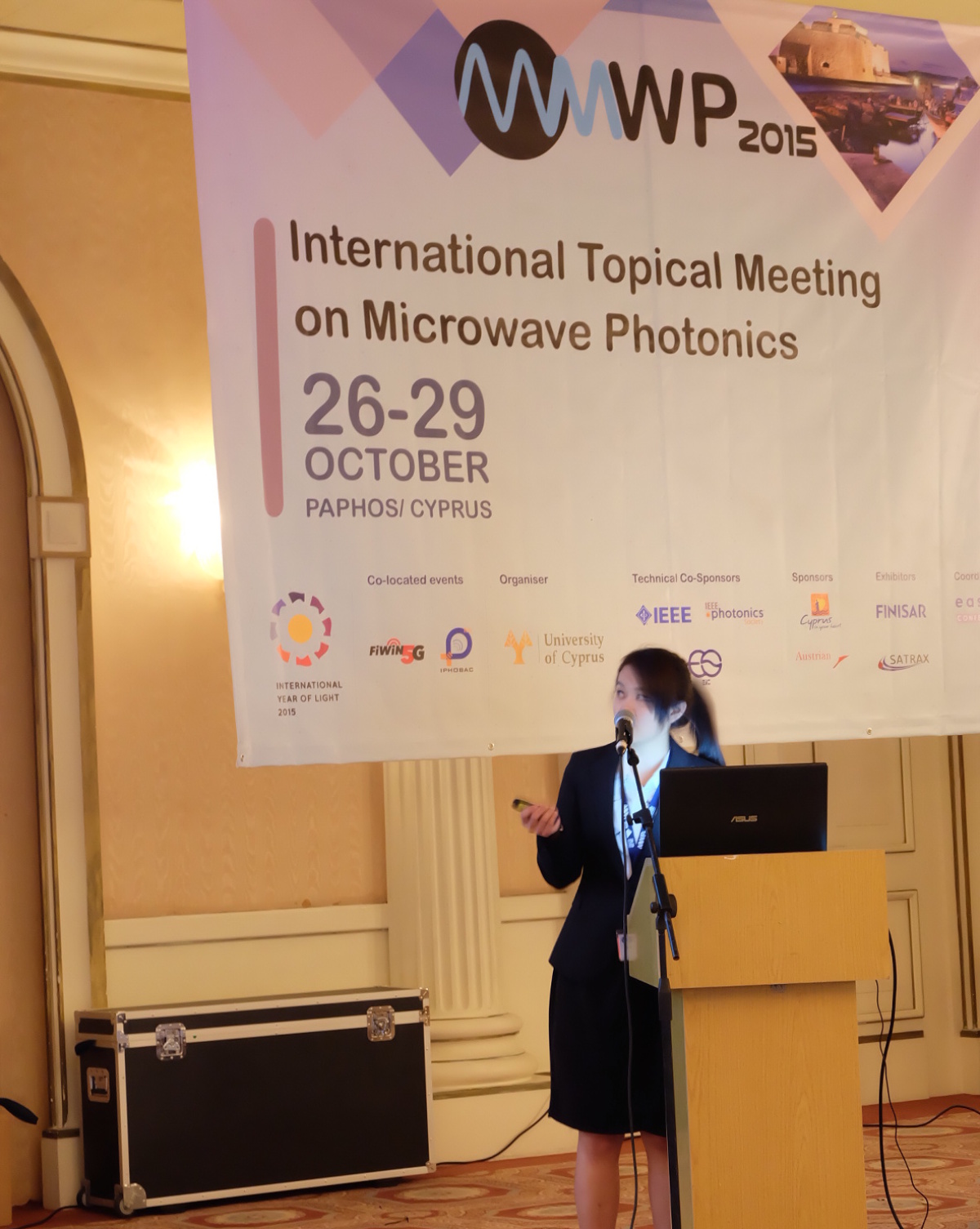Press releases
Rattana Chuenchom wins Best Paper AwardNew coherent photomixer for millimeter-wave radio systems
Microwave photonics is an interdisciplinary field that deals with the interaction of microwaves and light waves in the generation, processing, control and propagation of signals in the terahertz as well as micro- and millimeter-wave range. Microwave photonics can be found in many applications, such as high-speed wireless networks, radar, sensors, and advanced instrumentation.
The "International Topical Meeting on Microwave Photonics" (MWP) is the most important international meeting on microwave photonics and provides a presentation platform for new developments in this multidisciplinary research field, from new devices to field experiments.
The MWP venue alternates every three years between Europe, the Americas, and the Asia-Pacific region, and this year was in Paphos, on the island of Cyprus, from October 26-29.
The University of Duisburg-Essen was represented in Paphos this year by five people from the Center for Semiconductor Technology and Optoelectronics: Rattana Chuenchom, Maria Freire, Vitaly Rymanov, Professor Xihua Zou, and Professor Andreas Stöhr, Chair of the MWP Technical Program Committee, had traveled to present system and technique developments in recent months from the field of millimeter-wave photonics.
Special recognition was given to the development of new devices for wireless telecommunications, which earned Rattana Chuenchom the "Best Overall Paper Award" for her paper "Integrated 110 GHz Coherent Photonic Mixer for CRoF Mobile Backhaul Links."
The photonic mixer (CPX) presented there is a joint development of the University of Duisburg-Essen and Finisar. For the first time, the CPX offers the possibility of transparently transferring optical baseband signals into the millimeter-wave radio range by means of optical upconversion. The carrier frequency of the radio signal generated in this way can be tuned over an enormously wide frequency range from DC to 110 GHz. In this respect, the CPX is not only suitable for today's radio networks such as 3G, 4G but also for future 5G networks and even for research networks operating at even higher carrier frequencies. Further applications are in materials analysis and radar technology. The work carried out was financially supported by the EU Commission within the IPHOBAC-NG and RAPID-5G projects.
Contact: Andreas Stöhr

